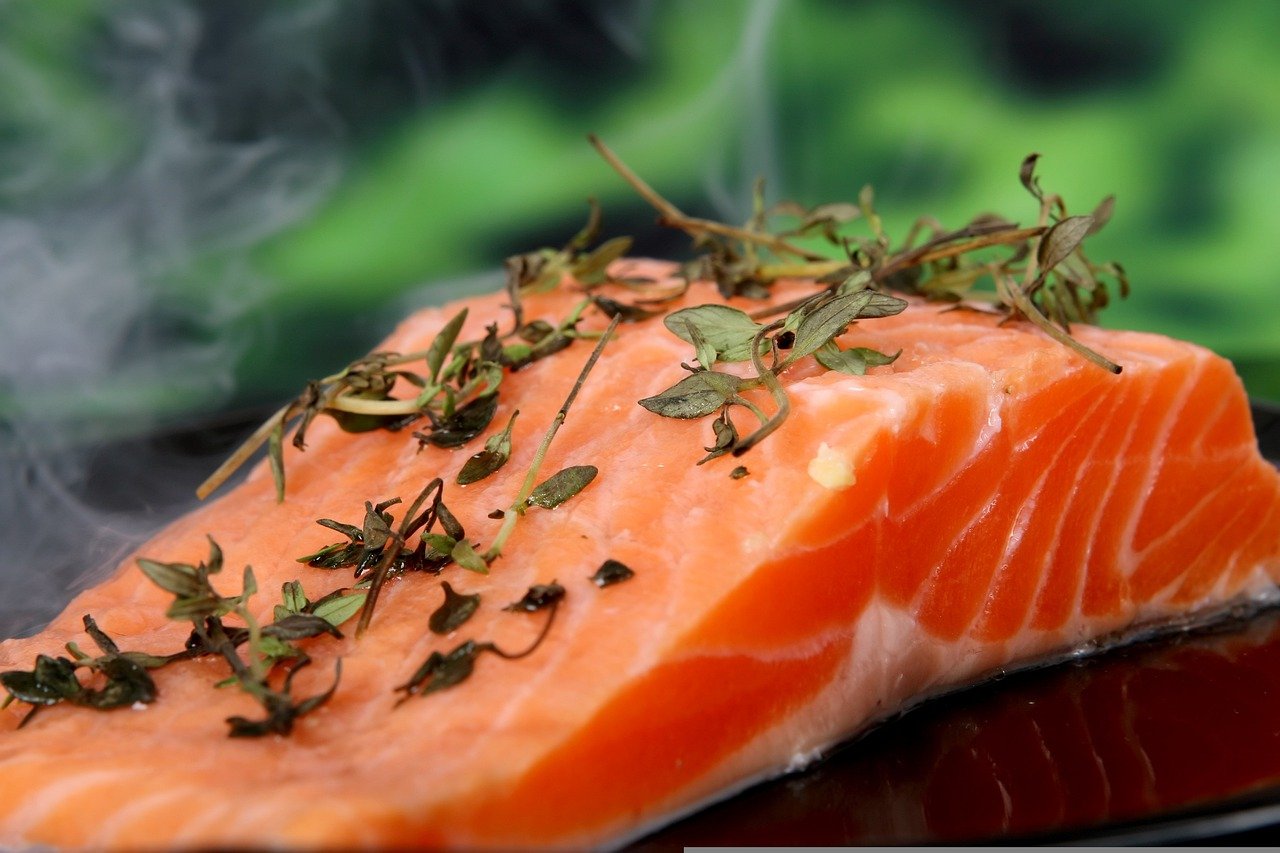Healthy Saturated Fats?

To start, eating an adequate supply of healthy dietary fats is vitally important to your overall health. Fats are one of the main components in all of the cell membranes throughout your entire body. If you eat enough healthy natural fats, your cellular processes will proceed normally. On the other hand, if you eat man-made, heavily processed, chemically altered fats (damaged fats) that are found in most processed foods, your cellular function will be impaired as these damaged fats become part of your cell membranes, the body will have to work harder to operate correctly, and degenerative diseases can develop. In addition, healthy dietary fats are essential for optimal hormone production and balance within the body and are therefore essential for the muscle building and fat burning processes. Other important functions that dietary fats play in a healthy body are aiding vitamin and mineral utilization, enzyme regulation, energy, etc.
I cringe every time I hear so called “health experts” recommend restriction of dietary fat, claiming that a low-fat diet is the key to good health, weight loss, and prevention of degenerative diseases. Restriction of any one macronutrient (protein, carbs, or fat) in your diet works against what your body needs and can only lead to problems. All three basic macronutrients serve important functions for a lean, healthy, and disease-free body. As Dr. Mary Enig, Ph.D, and one of the leading fats and lipids researchers in the world, notes in several of her books and articles, there is very little true scientific evidence supporting the assertion that a high fat diet is bad for us. For example, if these so called “health experts” that admonish fat are correct, and a low-fat diet is the solution to good health, then why did traditional Pacific Islanders who typically obtained 2/3 to 3/4 of their total daily calories from fat (mostly from coconut fat), remain virtually free from heart disease, obesity, and other modern degenerative diseases (that is, until Western dietary influences invaded)? Also, why did traditional Eskimo populations, consuming up to 75% of their total caloric intake from fat (mostly from whale blubber, seal fat, organ meats, and cold water fish), display superior health and longevity without heart disease or obesity?
Why did members of the Masai tribe in Africa remain free from degenerative diseases and maintain low body fat percentages on diets consisting of large quantities of raw whole milk, blood, and meat? What about the Samburu tribe of Africa, which eats an average of 5 times the quantity of dietary fat (mostly from raw whole milk and meat) as overweight, disease-ridden Americans, yet Samburu members are lean, healthy, and free of degenerative diseases? What about traditional Mediterranean diets, which are known to be very high in fat (sometimes up to 70% fat), and are also well known to be very healthy?
These examples of high fat diets and the associated excellent health of traditional populations around the world go on and on, yet it seems that many doctors, nutritionists, and government agencies still ignore these facts and continue to promote a diet that restricts fat intake. Well, the problem is that the good fats (the natural unprocessed health promoting fats) have gotten mistakenly lumped together in nutritional advice with the deadly processed fats and oils that make up a large percentage of almost all processed food that is sold at your local grocery store, restaurant, deli, fast food joint, etc. These deadly processed fats are literally everywhere and almost impossible to avoid unless you know what to look for and make smart choices in what you feed your body with. Take note that I’m not recommending following a super high fat diet. Active individuals that exercise on a regular basis certainly also need adequate supplies of healthy carbohydrates for energy and muscle glycogen replenishment as well as good sources of protein for muscle repair. The above examples of the high fat diets of traditional populations and their corresponding excellent health were simply to prove the point that you don’t need to be afraid of dietary fats as long as you make healthy natural choices and stay within your daily caloric range to maintain or lose weight (depending on your goals). Following is a list of some of the healthiest fatty foods (some will surprise you!) as well as some of the deadliest fatty foods to try to avoid at all costs:
The Healthy Fatty Food Choices:
Coconut Fat:
Coconut fat is approximately 92% saturated fat, yet surprisingly to most people, is considered a very healthy natural fat. The health benefits of coconut fat lie in its composition of approximately 65% medium chain triglycerides (MCTs). Specifically, about 50% of coconut fat is a MCT called lauric acid, which has very potent anti-microbial properties helping to enhance the immune system. Also, MCTs are more easily utilized for immediate energy instead of being stored as body fat. Coconut oil is also an excellent cooking oil for stir-frying, etc. since saturated fats are much more stable and do not oxidize like polyunsaturated oils when exposed to heat and light, which creates damaging free radicals. The best sources of healthy coconut fat are organic coconut milk, virgin coconut oil, or fresh coconut.
Extra Virgin Olive Oil:
Olive oil is approximately 71% monounsaturated, 16% saturated, and 13% polyunsaturated. Choose “extra virgin” olive oil, which comes from the first pressing of the olives and has higher quantities of antioxidants. Unlike most other oils on supermarket shelves, extra virgin olive oil is not extracted with the use of harmful industrial solvents and is one of your healthiest choices for liquid oils. Try making your own salad dressing by mixing a small amount of olive oil with vinegar. This is healthier than most store bought salad dressings, which are usually made with highly processed and refined (chemically damaged) soybean oil extracted with industrial solvents.
Dark, Bittersweet Chocolate (>70% cocoa):
The cocoa bean is a very concentrated source of antioxidants and responsible for part of the health benefit of dark chocolate. The fat portion of the cocoa bean (cocoa butter) is a healthy natural fat, composed of approximately 59% saturated fat (mostly healthy stearic acid), 38% monounsaturated fat, and 3% polyunsaturated fat. I’ll limit the description of healthy chocolate to ONLY dark bittersweet chocolate with >70% cocoa content. Most milk chocolates are only about 30% cocoa, and even most dark chocolates are only about 55% cocoa, leaving the remainder of those products composed of high amounts of sugar, milk fat, corn sweeteners, etc. Look for a quality dark chocolate that lists its cocoa content between 70%-80%. A dark chocolate with cocoa content in this range will contain mostly cocoa and very little sugar. Keep in mind that although dark chocolate can be a healthy treat, it is still calorie dense, so keeping it to just a square or two is a good idea.
Avocados or Guacamole:
The fat in avocados (depending on where they’re grown) is approximately 60% monounsaturated, 25% saturated, and 15% polyunsaturated. Avocados are a very healthy natural food that provides many nutrients, fiber, and healthful fats, while adding a rich flavor to any meal. Try sliced avocado on sandwiches or in salads or use guacamole in wraps, sandwiches, or quesadillas.
High Fat Fish such as Wild Salmon, Sardines, Mackerel, Herring, Trout, etc.:
Just about any fish or seafood are good sources of natural omega-3 polyunsaturated fats, but the higher fat fish listed above are the best sources of omega-3’s. Due to the radical switch to a higher proportion of omega-6 polyunsaturated fats like soybean oil, corn oil, safflower oil, etc. in our food supply during the middle of the 20th century, the average western diet is currently way too high in omega-6’s compared to omega-3’s, which wreaks havoc in your body. This is where good omega-3 sources like high fat fish, walnuts, and flax seeds can help bring you back to a better ratio of omega-6/omega-3.
Nuts (any and all – walnuts, almonds, peanuts, cashews, macadamias, etc.):
Nuts are great sources of healthy unprocessed fats as well as minerals and other trace nutrients. Macadamias, almonds, and cashews are great sources of monounsaturated fats, while walnuts are a good source of unprocessed polyunsaturated fats (including omega-3’s). Try to avoid nuts that are cooked in oil. Instead, choose raw or dry roasted nuts.
Seeds (sunflower seeds, pumpkin seeds, sesame seeds, flax seeds):
All of these seeds are great sources of natural unprocessed healthy fats. In particular, flax seeds have received a lot of attention lately due to their high omega-3 content. However, keep in mind that omega-3 polyunsaturated fats are highly reactive to heat and light, and prone to oxidation and free radical production, so freshly ground flax seed is the only way to go. Instead of using the store bought ground flax seed, you can buy whole flax seed and use one of those miniature coffee grinders to grind your own flax seed. Try grinding fresh flax seed into your yogurt, cereal, or even your salad. If you’re using a flax oil, make sure it’s a cold-pressed oil in a light-proof refrigerated container, and use it up within a few weeks to prevent it from going rancid. NEVER cook with flax oil!
The Fat in Organically Raised, Free-Range Animals:
This is where most people have been misinformed by the mass media. Animal fat is inherently good for us, that is, if it came from a healthy animal. Human beings have thrived on animal fats for thousands of years. The problem lies in the fact that most mass produced animal products today do not come from healthy animals. They come from animals given loads of antibiotics and fattened up with hormones and fed un-natural feed. The solution is to choose organically raised, free-range meats, eggs, and dairy. At this time, the price is still a little higher, but it is worth it, and as demand grows, the prices will come down.
The Deadly Fatty Foods:
Hydrogenated Oils (trans fats):
These are industrially produced chemically altered oils subjected to extremely high pressure and temperature, with added industrial solvents such as hexane for extraction, and have a metal catalyst added to promote the artificial hydrogenation, followed by bleaching and deodorizing agents…..and somehow the FDA still allows this crap to pass as food. These oils aren’t even worthy of your lawnmower, much less your body! They’ve been linked to obesity, heart disease, diabetes, cancer, and more. Even small quantities have been shown in studies to be dangerous. If you care about your health, check the ingredients of everything you buy, and if you see partially hydrogenated oils of any kind, margarine, or shortening, protect yourself and your family by choosing something else. The FDA has mandated that all food manufacturers have to show the quantity of trans fat on all labels by January 2006.
Refined Oils:
Even if the oils are not hydrogenated, most oils on your supermarket shelves are refined, even most of the so called “healthy” canola oils. Even most refined oils still undergo the high temperature, high pressure, solvent extraction, bleaching, and deodorizing processes. Anything labeled vegetable oil, soybean oil, corn oil, cottonseed oil, safflower oil, and even many canola oils have been damaged by this refining process. This damages the natural structure of the fats, destroys natural antioxidants, creates free radicals, and produces a generally unhealthy product. Take note that the explosion of heart disease in the middle of the 20th century coincides quite nicely with the rapid increase in the use of hydrogenated and refined oils in the food supply at that time.
Anything Deep Fried:
Including tortilla chips, potato chips, French fries, donuts, fried chicken, chicken nuggets, etc. All of this crap doesn’t even pass as real food in my opinion!
Homogenized Milk Fat
Milk fat is a very healthy fat in its natural raw state. Traditional populations around the world thrived in perfect health while consuming huge quantities of raw, non-pasteurized, non-homogenized, full fat dairy products. Once again, food processing ruins a good thing by pasteurizing and homogenizing milk fat, rendering it potentially dangerous inside the human body. Unfortunately, you will find it almost impossible to find raw milk in the US unless you personally know a farmer. Check out realmilk.com for more info on the benefits of raw milk and to find out if it’s available near you. As an alternative, cultured dairy products like yogurt have at least had beneficial microorganisms added back to them making them better for you. Realistically, since you probably won’t find raw milk, sticking to skim milk is the best option. If you use butter for cooking, cultured organic butter is the best option.
I hope this article has shed some light on the truth about dietary fats and made you realize their importance in a healthy diet.
The Author:
Thompson Stephen is dedicated to helping people stay informed about health and fitness.








